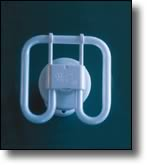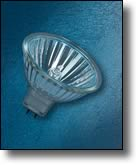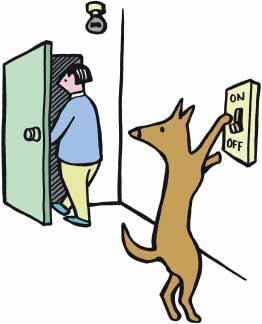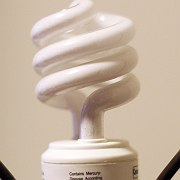 Over
its life, a typical compact fluorescent lamp saves around a third of
a tonne of greenhouse gas and $45 and avoids the cost of 6 or more
incandescent globes. And you don’t have to change the bulbs as
often.
Over
its life, a typical compact fluorescent lamp saves around a third of
a tonne of greenhouse gas and $45 and avoids the cost of 6 or more
incandescent globes. And you don’t have to change the bulbs as
often. Over
its life, a typical compact fluorescent lamp saves around a third of
a tonne of greenhouse gas and $45 and avoids the cost of 6 or more
incandescent globes. And you don’t have to change the bulbs as
often.
Over
its life, a typical compact fluorescent lamp saves around a third of
a tonne of greenhouse gas and $45 and avoids the cost of 6 or more
incandescent globes. And you don’t have to change the bulbs as
often.
F luorescent
lamps cut greenhouse gas emissions and running costs by 75%
while producing as much light. They come as circular or linear
tubes, or as plug-in compact fluorescent lamps (CFLs).
luorescent
lamps cut greenhouse gas emissions and running costs by 75%
while producing as much light. They come as circular or linear
tubes, or as plug-in compact fluorescent lamps (CFLs).
Don’t connect more than three lights to each light switch—then you can leave lights you don’t need switched off.
Low voltage halogen lamps are not low energy lamps: each one generates a kilogram of greenhouse gas every 15 hours—about the same as an ordinary 60 watt globe, although it does produce a little more light.
Remember, it’s not volts that matter: more watts means higher energy bills and more greenhouse gas.
Fit lower wattage globes (or compact fluorescent lamps) in bright lights, especially down lights and spot lights: save up to 75% of greenhouse gas.
Select light fittings with reflectors that direct light where you want it and do not absorb too much light—coloured glass can halve light output, creating a need for higher wattage lamps.
LED (light emitting diode) lamps are very long-lasting and efficient are beginning to appear for outdoor use and specialised applications like night-lights.
Traditional CFLs deliver most of their light to the sides: an effective reflector may be needed to direct the light. Corkscrew shaped CFLs and CFLs enclosed in frosted plastic spheres distribute light in a pattern more like that of incandescent lamps.
H alogen
lights are also a type of incandescent lamp. The halogens in
the bulbs prevent evaporated tungsten from depositing on the glass
bulb. They are more expensive to buy but last up to two thousand
hours. They can be either 240V bulbs, which are usually tubular and
often used in uplighters and outdoor floodlights, or low voltage
bulbs typically used in downlighting. All halogen lamps require
special light fittings.
alogen
lights are also a type of incandescent lamp. The halogens in
the bulbs prevent evaporated tungsten from depositing on the glass
bulb. They are more expensive to buy but last up to two thousand
hours. They can be either 240V bulbs, which are usually tubular and
often used in uplighters and outdoor floodlights, or low voltage
bulbs typically used in downlighting. All halogen lamps require
special light fittings.
Low voltage halogen lamps are not low energy lamps.
Low voltage halogen lamps are slightly more efficient than normal bulbs of the same wattage, but they use a transformer that can consume from 10 to 30 percent of the bulb energy, reducing the efficiency gain.More efficient electronic transformers are available which reduce transformer losses.
Efficient 35W lamps are available that produce as much light as a standard 50W lamp.
B8_s9_1
Just a few outdoor lights left on every evening can double a household’s lighting greenhouse gas emissions and lighting costs: switch them off if they’re not needed.
Install daylight and movement sensors so outdoor lights switch on when they’re needed but don’t waste electricity.
For outdoor lights that must stay on for long periods, use energy-efficient compact fluorescent or LED lamps and choose the lowest wattage lamp that gives enough light.
It’s worth considering solar-powered garden lights.
 se
lights efficiently
se
lights efficientlyTurn off unnecessary lights, including fluorescent lamps. Leaving fluorescent lamps on doesn’t save energy or cut greenhouse gas emissions—switch them off! Use daylight instead of artificial lights—but don’t overdo it—large windows and skylights add to summer heat and winter cold. Paint often-used rooms with light colours. Dark colours absorb light, increasing the amount of lighting needed.
Use desk lamps or standard lamps (with CFLs in them) where most light is needed, so less lighting is required in the rest of the room.
Modern dimmer controls reduce greenhouse gas emissions as they reduce light output. They also extend lamp life. Dimmer controls can now also be used with some CFLs, but check the label first.
Clean lamps and fittings regularly: over time, dirt build-up reduces light output.

Without much effort, the almost 500 million citizens of the European Union could reduce their energy use by one-fifth!
An energy-saving compact flourescent light bulb, for example, uses only one-fifth of the energy required by a conventional incandescent bulb and lasts ten times longer.
Saving energy to secure world supplies
How people use energy -- and the products that require it ~ every liter of oil, every cubic meter of gas, every kilowatt-hour of power conserved not only saves money and the environment. It also helps secure the world's energy supplies.

Energy efficient compact fluorescent light bulbs:
use around 20 per cent of the electricity used by standard incandescent light bulbs to produce the same amount of light
can last between 4 and 10 times longer than the average incandescent light bulb
lead to major savings in household energy costs, and can pay for themselves in lower power bills within a year.
Provide a high level of visual comfort. ∙ Make use of natural light.
Provide the best light for the task. ∙ Provide controls for flexibility.
Have low energy requirements.
purchase, running and replacement costs
|
|
20 W |
100 W |
65W |
|
Running cost over |
$20 |
$100 |
$75** |
|
Average life |
10,000 hours |
1,000 hours |
2,000 hours |
|
Purchase cost |
$25 |
$5 |
$20 |
|
Total cost |
$45 |
$105 |
$95 |
* Based on 10 cents per unit of electricity, ** Includes magnetic transformer losses.
Provide multiple switches to control the number of lights that come on at any one time. Place switches at the exits from rooms and use two way switching to encourage lights to be turned off when leaving the room.
'Smart' light switches and fittings use movement sensors to turn lights on and off automatically. These are useful in rooms used infrequently where lights may be left on by mistake, or for the elderly and disabled. Make sure they have a built-in daylight sensor so that the light doesn't turn on unnecessarily. Be aware that the sensors use some power continuously, up to 5W or even 10W in some cases.
Use timers, daylight controls and motion sensors to switch outdoor security lights on and off automatically. Similar controls are particularly useful for common areas, such as hallways, corridors and stairwells, in multi-unit housing. Consider using solar powered lighting for garden and security lights.
Modern dimmer controls for incandescent lights save energy and also increase bulb life. Most standard fluorescent lamps cannot be dimmed, but special dimmers and lamps are available.
Rooms are often excessively lit. Make sure you are not using a higher wattage bulb than is necessary.
Turn off unnecessary lights, including fluorescent lamps if leaving a room for more than ten minutes.
Clean light fittings regularly to allow more light to pass through.
Decorating with light coloured finishes and furnishings can allow lighting levels to be reduced
B8_s9_3